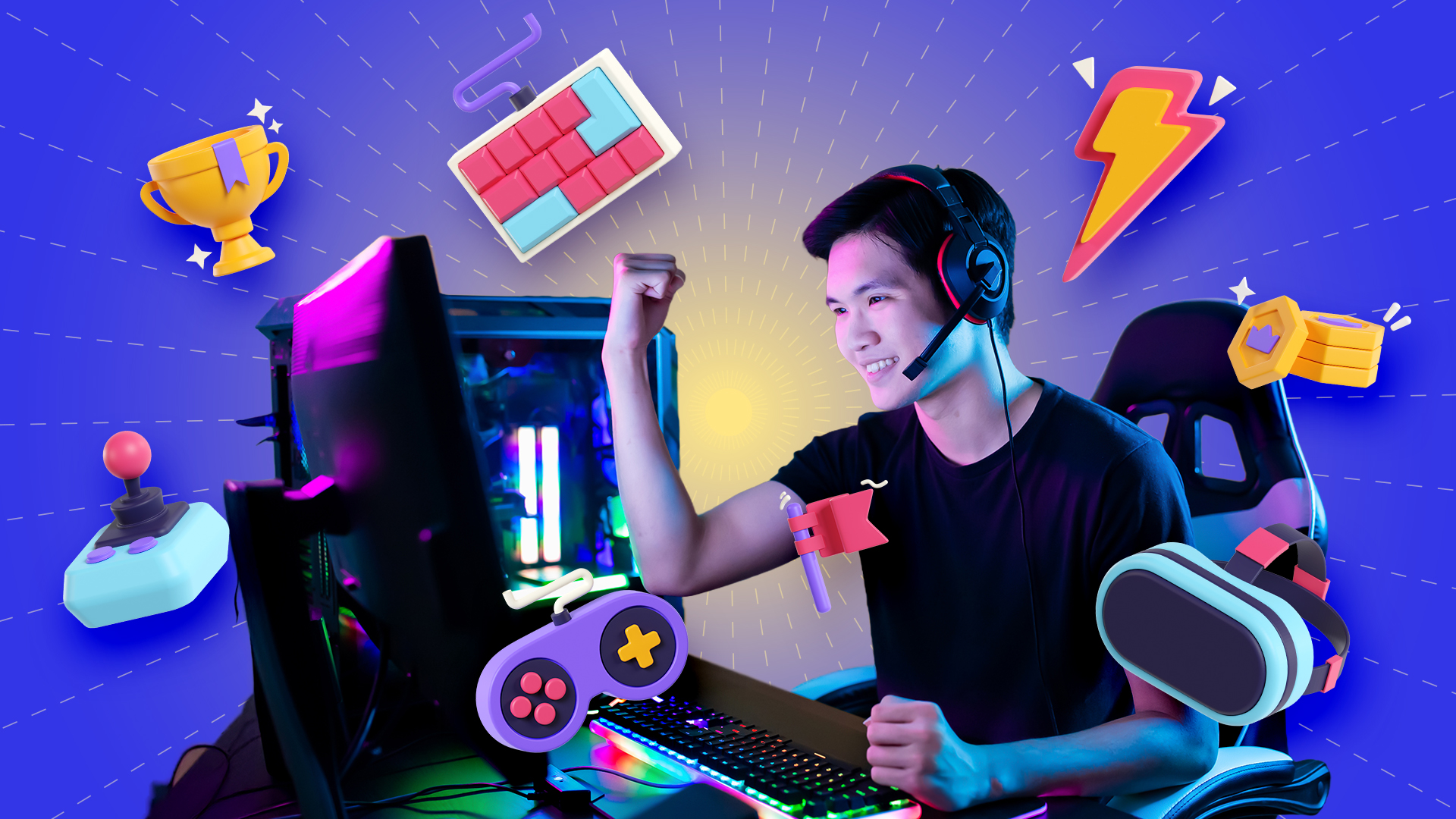A few years ago, if you mentioned “Philippine game development” in an international room, you might have gotten polite nods — maybe a reference to outsourcing, maybe a passing mention of Ubisoft’s Manila studio. But today, the narrative has shifted. The Rise of Pinoy-Made Games is changing the story — the Philippines isn’t just part of the global gaming supply chain anymore — it’s becoming a recognized creative hub in its own right.
From record-breaking player engagement to AAA co-development and original indie hits rooted in Filipino culture, the country is shaping up to be Southeast Asia’s next big development hotspot.
1. From Players to Producers
The Philippines’ gaming culture runs deep. It’s not just a pastime; it’s a national habit. By 2023, roughly 95% of Filipino internet users played video games, according to Philstar, a staggering figure that puts the country among the world’s most gaming-obsessed nations.
By 2024, Filipinos ranked 6th globally in hours spent gaming, ahead of countries with much larger economies. From late-night mobile battles on public WiFi to family game nights with shared smartphones, gaming has become part of everyday life.
This obsession was fueled by accessibility. Smartphones have done for gaming what karaoke did for music: they made it democratic. With 98% of Filipino gamers playing on mobile, the market naturally gravitated toward free-to-play (F2P) titles. For many studios, that model wasn’t just a business choice, it was survival.
High engagement, long playtimes, and a massive player base have turned the Philippines into a real-time testbed for game design and monetization strategies. Even if the average player doesn’t spend much, the sheer volume of activity creates opportunities for ads, events, and community-driven revenue models.
In short, Filipinos don’t just play games, they live them. And that lifestyle became the foundation of a national industry.
2. Lessons from Early Struggles
The Philippine game development scene didn’t start easy. In the early 2000s, a handful of pioneering studios — like Anino Entertainment, eSoft Interactive, and Fluxion Games — tried to build original titles. Many hit technical or financial walls.
But those challenges forced a strategic evolution. As Western and Japanese publishers sought cheaper, high-quality production partners, local studios began focusing on co-development and outsourcing.
That pivot turned out to be a blessing in disguise. It gave developers the chance to learn global best practices, build relationships with major studios, and slowly climb the value chain. Over time, the country’s game dev ecosystem grew from a handful of dreamers into a disciplined, export-oriented industry with two engines of growth:
- AAA and outsourcing work, producing world-class assets, engineering, and testing.
- Independent Pinoy IP creation, where local teams build their own games inspired by Filipino culture, humor, and myth.
The balance between these two worlds, creative independence and global collaboration, is what makes the modern Filipino game dev story unique.
3. The Billion-Dollar Boom
The numbers back it up. Analysts project the Philippine gaming market to reach $2.77 billion by 2028, growing steadily at a 7.34% CAGR.
In 2024 alone, the local gaming sector generated ₱94.61 billion in gross revenue, a 37.5% jump from the previous year. And it’s not just consumer spending that’s growing. The country’s creative export sector, including game art and animation outsourcing, is on track to hit $180 million in 2024, with steady double-digit growth through 2028.
Regionally, the Philippines leads Southeast Asia in mobile downloads (over 366 million in Q1 2025) but trails countries like Singapore and Thailand in in-app purchase (IAP) value. That’s the next big hurdle: converting huge engagement into higher spending.
Industry experts point out that the bottleneck is not enthusiasm but infrastructure. Limited payment options, patchy fintech coverage, and reliance on prepaid systems hold back monetization. Once digital payments mature and telco billing expands, that gap could close fast.
In other words, the audience is already here, the pipes just need upgrading.
4. The Human Edge
Every industry has its secret weapon. For the Philippines, it is the people.
Filipino developers bring a mix of technical skill, language fluency, and cultural empathy that few countries can match. For international studios, that translates to fewer misunderstandings, smoother collaboration, and stronger creative chemistry.
Labor costs remain competitive, often 30–40% lower than Western equivalents — but it’s not just about savings. The work ethic and cultural alignment of Filipino teams have made them reliable partners for creative work that demands precision and trust.
The academic side is catching up fast. Schools like De La Salle University and iACADEMY now run dedicated degree programs in game development and multimedia computing. These aren’t just programming courses,they include 3D animation, audio design, physics simulation, and entrepreneurship.
As a result, studios are hiring graduates who can design, code, and pitch, not just execute tasks. The only remaining challenge is depth: developing more senior, specialized engineers who can architect large systems or lead teams.
The government’s Enhanced Deduction program, which offers up to 150% tax deductions on training costs, is designed to fix that. For investors, that’s basically a subsidy for building a high-skill workforce.
5. From Assassin’s Creed to Bayani: The Proof of Capability
If there’s one milestone that symbolizes how far the industry has come, it’s Ubisoft Philippines.
In less than a decade, the Manila studio has contributed to 12 major Ubisoft titles, including Assassin’s Creed Valhalla, The Crew 2, and the upcoming Assassin’s Creed Shadows (2025).
This isn’t just bug testing or low-tier asset work. The local team handles characters, weapons, architecture, and technical art — the kind of high-skill production once limited to European and North American teams. Their ability to research and model culturally specific details, like Japan’s kusarigama weapon for Shadows, showcases an artistic and technical sophistication that’s world-class.
Outside the AAA world, the indie scene is exploding with identity.
- Polychroma Games’ Until Then captures the bittersweet rhythm of Filipino high school life. Its pixel art, realism, and emotional storytelling earned international praise and a Metascore of 76.
- Ranida Games’ BAYANI: Kanino Ka Kakampi? reimagines Philippine heroes as fighting game champions, turning history lessons into high-octane matches. It holds a “Very Positive” rating on Steam.
- Monstronauts’ Potion Punch 2 racked up nearly 19 million downloads, proving that locally made mobile games can compete globally in the F2P space.
These successes prove that Filipino creativity doesn’t need to imitate anyone else. It just needs a platform.
6. Building a Supportive Ecosystem
The rise of Pinoy-made games didn’t happen by accident. The government and industry groups have been quietly laying the groundwork for years.
The Game Developers Association of the Philippines (GDAP), formed in 2007, acts as the connective tissue between schools, studios, and policymakers. Together with the Cultural Center of the Philippines (CCP), GDAP has launched grant programs including a ₱20 million fund to support locally inspired content.
The CREATE Law sweetens the deal for investors, offering income tax holidays, duty-free imports, and a 5% special corporate tax for up to a decade. More importantly, those Enhanced Deductions for training and labor mean companies can grow talent in-house without eating into profits.
And when the pandemic changed how the world works, the Fiscal Incentives Review Board (FIRB) made a smart call: letting PEZA-registered game dev firms switch to BOI registration to allow 100% work-from-home setups while keeping tax breaks intact.
That kind of policy flexibility is rare, and it’s exactly what global studios look for before investing.
7. Leveling Up the Future
So, what’s next for the Philippine gaming industry?
If the 2010s were about proving capability, the 2020s are about owning creative identity. The next phase is transforming the country from a high-volume, low-monetization market into a high-value, globally respected creator economy.
To get there, three things need to happen:
- Monetization modernization - stronger digital payment systems and better revenue capture.
- Deeper specialization - nurturing senior technical and creative leaders who can drive large-scale projects.
- Cultural confidence - continuing to tell uniquely Filipino stories that can stand shoulder-to-shoulder with the world’s best.
The Philippines is no longer just a place where games get made cheaply. It’s a place where they get made beautifully, cleverly, and authentically.
For global studios, the country offers not just cost savings, but creative partnership. For local developers, it’s a chance to show that Filipino imagination, bold, emotional, and unafraid of risk, deserves a spot on the world stage.
In short: the Philippines isn’t just part of the global gaming conversation anymore.
It’s helping write the script.
Got a killer game idea or need a trusted dev partner to bring it to life?
ClinkIT Solutions can help you build it — smarter, faster, and built to scale. Whether it’s mobile, PC, or console, our dev teams know what it takes to turn great ideas into great games.
Let’s talk!



